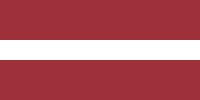
It is only about 45 kilometres from the Hill of Crosses in north Lithuania to the border with Latvia. Sandwiched between the other two Baltic states, much of Latvia is covered with forests, about a third of its territory in fact. Brown bears and wild boar patrol these forests. Many rivers too. The driver slows down as we approach the border but there are no customs controls or border guards here. There is no impediment to travel between the three Baltic states. So if you want a Latvian stamp in your passport, you won’t get one on this trip.
I spot a stork. Quite a few storks are flying about the countryside. They are easy to spot as they are rather large bright white birds with black wingtips and perch visibly atop tall poles and chimney pots. Latvia is a good place to spot birds on their migration I am told. No boars nor bears in sight though.
Rundale Palace
The grand baroque Rundale Palace, situated in the south of Latvia, is the first stop on the itinerary. It seems that, as happened with Vilnius’ Church of St Peter and St Paul, the Italians were called in here too. And this magnificent pale yellow palace was designed by Francesco Rastrelli (he also designed the Winter Palace in St Petersburg) as the eighteenth century residence of the Dukes of Courland. We are shown many rooms, some decorated with gold leaf, with paintings on ceilings and rococo cherubs. The Duke’s bedroom is situated between staterooms, as is the case in the Palace of Versailles, we are told, so that courtiers could watch the Duke dress. Odd. The walls and ceiling of the grand ballroom are white and decorated with figures representing the seasons, while the ceiling centrepiece is of a stork with its young.
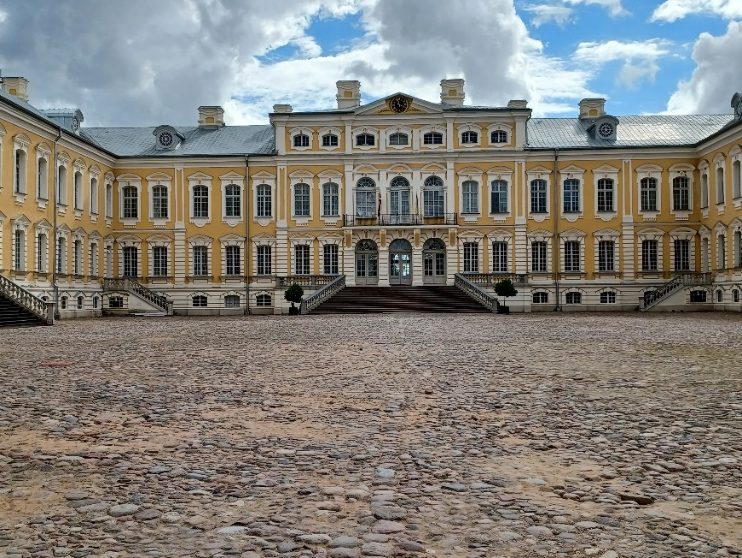
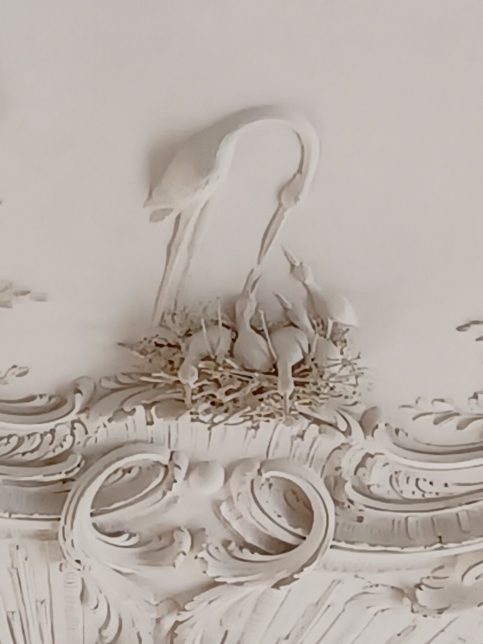
“When the last Duke of Courland died with no offspring”, relates our local Palace guide, “the Russians took over the palace. It was used as a school with one room used as a gym, another as a grain store”. She bemoans the fact that this lovely building took four years to build but after the Russians had abused it, it took thirty years to be restored. She shrugs resignedly and, after the tour, recommends a walk around the Palace gardens, which were also modelled on those of Versailles. Around a central fountain are immaculately manicured gardens, and long wide pathways lined with trees and shrubs. We dally a while, before piling back into the coach.
Riga
And so to the capital, Riga, the largest city in the Baltic states. Our guide resumes his commentary in three languages, rather than four because the Spanish group now occupy a separate bus. Better for the recipients too. Constant background commentary can become rather tedious. “Riga was one time part of Sweden. Bigger than Stockholm”, we hear. “It was once a timber exporting port and the British used the tall straight pines for ships’ masts”. It was a major centre of trade in the Hanseatic League. “Our forests still contribute to our economy”, we are told. “Green gold!”
We arrive at our Radisson hotel, much closer to the centre of the capital than our last one. It has been a longish day and the general consensus is that refreshment is required, so self and Polish friend and a few others head up to the rooftop bar for a cocktail. All in all, not a bad evening, and a smashing view over the city.
Art Nouveau, Riga
Near our hotel are several streets along which are buildings decorated with Art Nouveau. This artistic movement lasted from the 1890s to about 1910, a short time before WWI. It seems that some architects got bored with the classical and formal style with its symmetrical straight lines and decided to liven it up a bit. Quite diverting this décor is with the façades of these buildings featuring monsters and goblins, for example, bare breasted females, and foliage. The main street is named Alberta Iela, which I wouldn’t mind living on at all. Splendid buildings. “The most notable architect was Mikhail Eisenstein”, we are told. “Art Nouveau is also known as Jugendstil, and decorates over 750 buildings in Riga”, a good size architectural collection, ostensibly the largest anywhere.
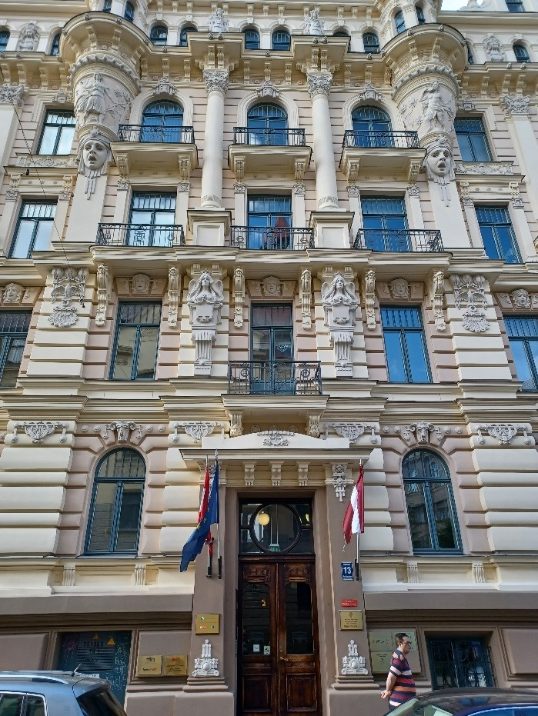
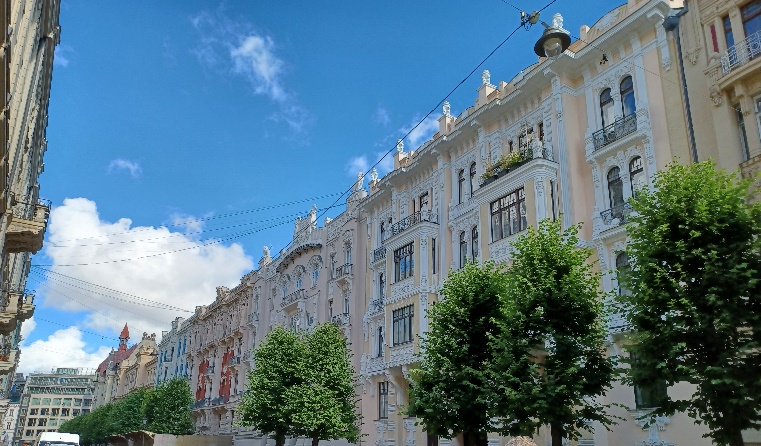
Freedom Monument; Putin, Stalin, and the Museum of Occupation
Round the corner, opposite the Russian Embassy, one is greeted by a huge poster of Vladimir Putin draped over the front of the building. Said Putin is depicted with the glaring toothy mouth of a skeleton on a blood red background. Graffiti abound on the railings below, some over the blue and yellow colours of the Ukrainian flag, some written in English: ‘Stop the War in Ukraine’; ‘Arm Ukraine’; ‘We will get to walk into Freedom!’ “The Latvians remember how it was under the Soviets,” muses our guide.
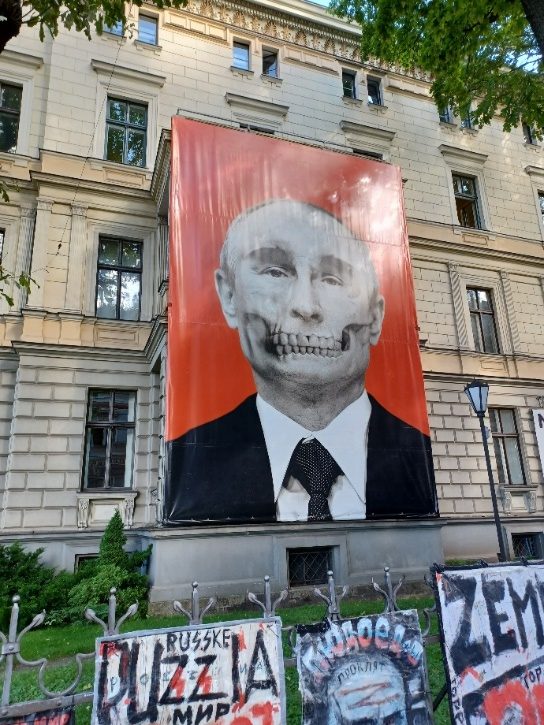
Suddenly, we hear the sound of low flying aircraft. “Russians”? someone queries. Our guide assures us that they are the planes from the NATO base nearby. Later we see some information boards commemorating the welcome ceremony in 2017 of the NATO Enhanced Forward Presence (EFP) battle group in Latvia.
Soon we reach the Freedom Monument, a tall pedestal with a female figure on top of it holding three golden stars. “This is the symbol of Latvia’s independence”, we are told “and where we are standing now is where the Baltic Way passed”. “The stars represent the three regions of Latvia: Courland where we were yesterday – where Rundale Palace is located, Vidzeme, where we are now, where Riga is located, and Latgale, the easternmost region, where we share a border with Russia”. He grimaces. Latgale actually forms the whole of the eastern border between the two countries and is inhabited by a significant proportion of ethnic Russians, about 38%. Some distance behind the Freedom Monument is a characterless block of 27 stories, our Radisson hotel. It spoils the photographs.
The Museum of the Occupation of Latvia deserves some of my free time. Our guide had told us that Latvia suffered terribly under the Nazis, as well as under the Soviet regime. Tens of thousands were killed, first under the Soviets (1940-41), then the Nazis (1941-44), then under the Soviets again (1944-91). There were several Jewish ghettos in Riga under the Nazis, and on two days, November 30th and December 8th, 1941, over 25,000 were exterminated in the Rumbala forest. It is known as the Rumbala massacre. No wonder the Baltic States stand in solidarity with Ukraine against their Russian aggressor. I read testimonials inside by many affected by the occupations, along with artefacts from the period. In sombre mood.
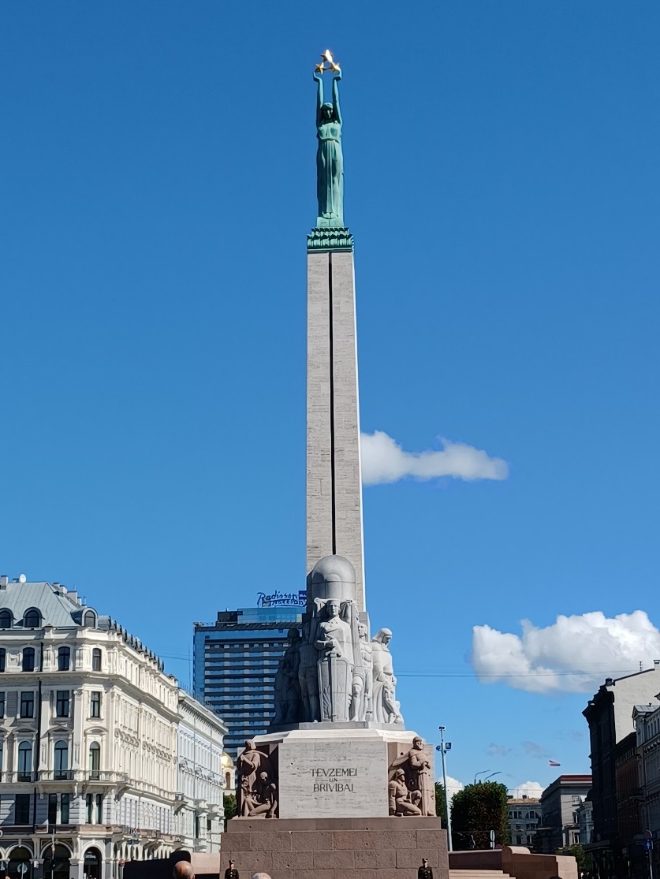
Later some of us visit the Riga Motor Museum, where we see the substantial black limousine used by Stalin, with its glittering chrome and polished finish. At the top of the windscreen are letters in white: ‘StandwithUkraine’. A model of Stalin sits in the back seat. Eager selfie takers surround the car. I prefer the beautiful vintage Fiat nearby. Lemon yellow colour with black wheel hubs. Exquisite.
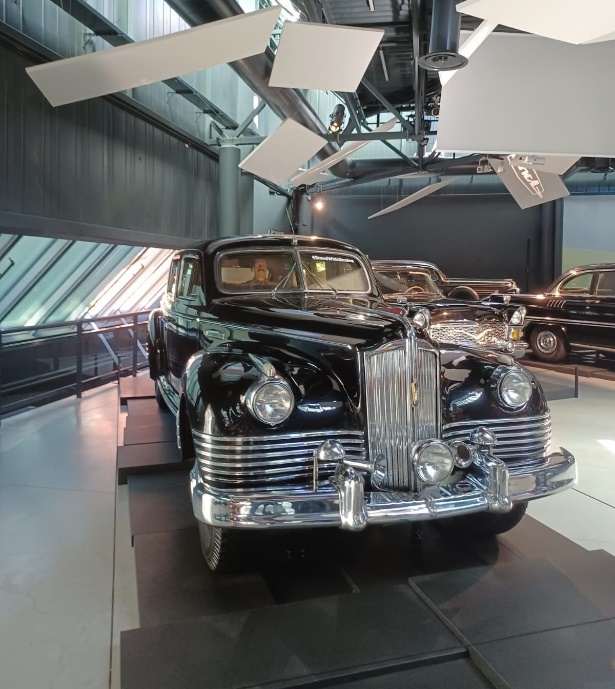
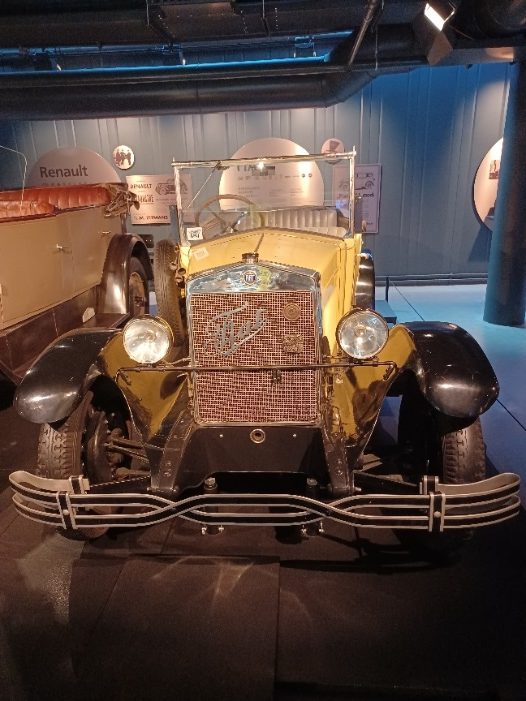
Riga’s buildings
Riga is full of picturesque buildings. Strolling along the cobblestones past medieval towers and arches we come to the ‘Three Brothers’, which are three houses next to each other, built in different centuries, the oldest from the 15th. Two men stand in front of them playing a tuba and a French horn. We listen awhile. The Latvian flag flies outside the Three Brothers along with that of Ukraine. The Latvian flag is similar to that of Austria but the outer two horizontal red stripes are twice as thick as the middle white stripe and the red is a deeper colour. Our guide is less than complimentary about the fact that when Latvia joined the EU, the Austrian flag was hoisted by mistake!
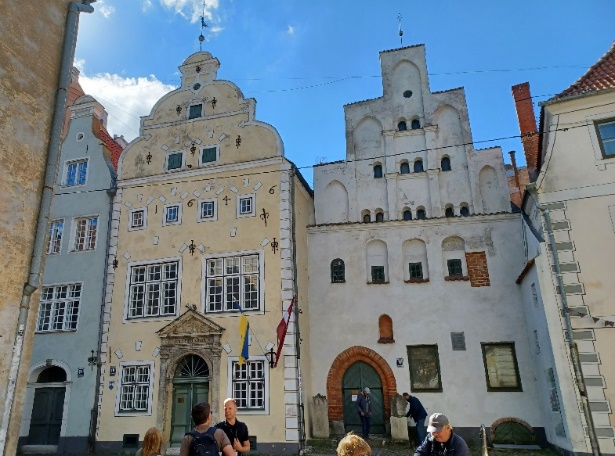
Many of Riga’s medieval buildings were damaged or destroyed during WWII including The House of the Blackheads, one of the most magnificent with its 14th century red brick Dutch style façade. It belonged to the Guild of Unmarried Merchants, we are told but, after rebuilding in the late 1990s, is now a museum and events centre. St Peter’s Church, a Lutheran church which has the tallest tower in Riga at over 123 metres high, also had to be rebuilt after artillery fire destroyed it. Atop the newish metal tower is a large windvane in the shape of a rooster.
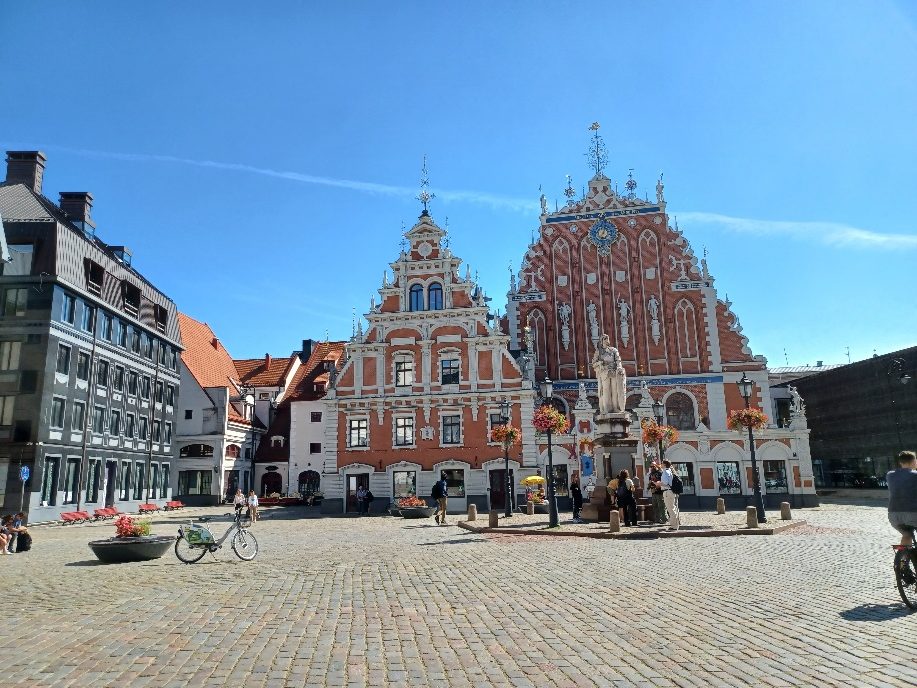
Daugava River
I head down to the Daugava now, Riga’s river, which rises in Russia and exits into the Gulf of Riga and the Baltic Sea. There are some decent little boats tied up by the quay, designed for the narrow city canal and perfect for a little excursion. Onion domes and steeples stick up behind the tree-lined promenade along the riverside, before the boat veers onto the canal. This runs through Kronvalda Park through grassy river banks, past pretty bridges and twinkling fountains. All rather lovely. I alight in sunny mood.
Riga Cathedral
This evening we are scheduled to attend an organ concert in ‘The Cathedral of the Archbishop of the Evangelical Lutheran Church of Latvia’, otherwise known as the Dome Cathedral or Riga Cathedral. Beforehand we are given a tour of the cloisters in which stands a neglected statue of the 17th-18th century Russian Emperor, Peter the Great, on his horse. Amidst some old fragments of stone and brick, it lies relegated and unwanted. The Freedom Monument usurped its once central position in town. We file inside the Cathedral now and view the splendid organ. Huge, at 22 metres high, it has 6718 pipes, and has been ‘the pride and glory of Riga Cathedral since 1884’, I read in the concert programme. Franz Liszt it was who wrote the chorale setting for ‘Now thank we all our God’ for the organ’s inauguration.
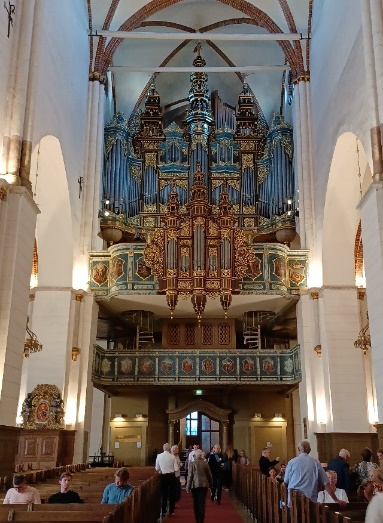
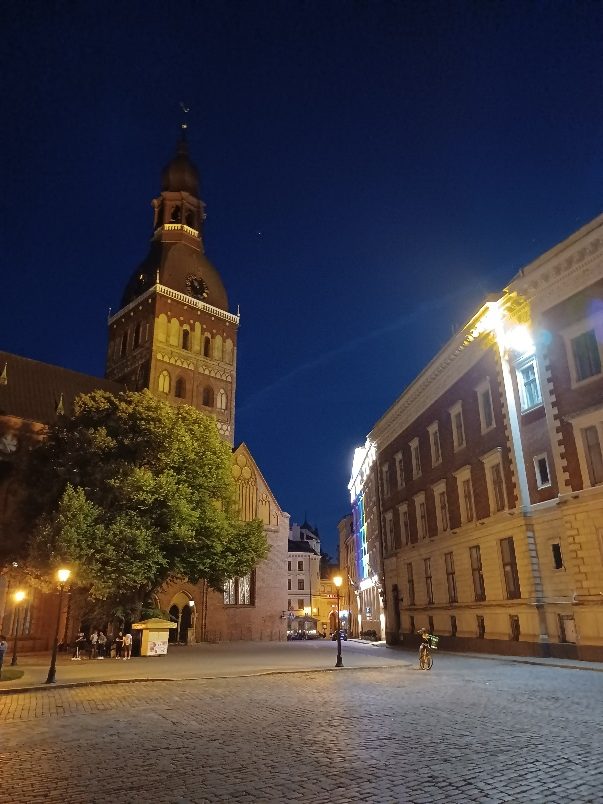
After the concert – a programme of Summer Sketches, rather atmospheric and melodic, featuring soprano and organ – we amble back to the hotel through the lamplit streets of Riga, through expansive tree lined squares with busy bars and cafés. A lone cyclist pedals past while we pause before photogenic architecture in narrow alleyways.
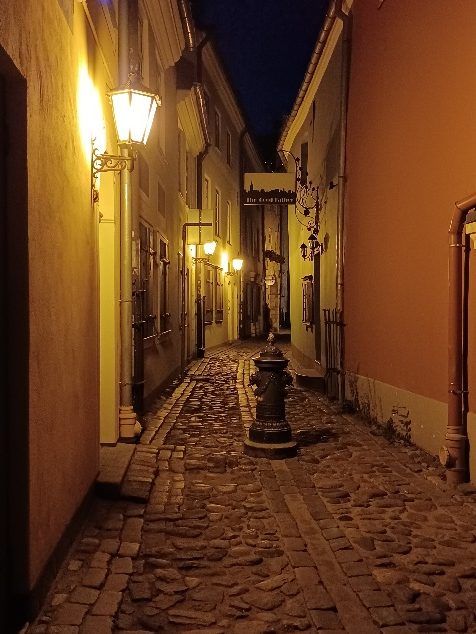
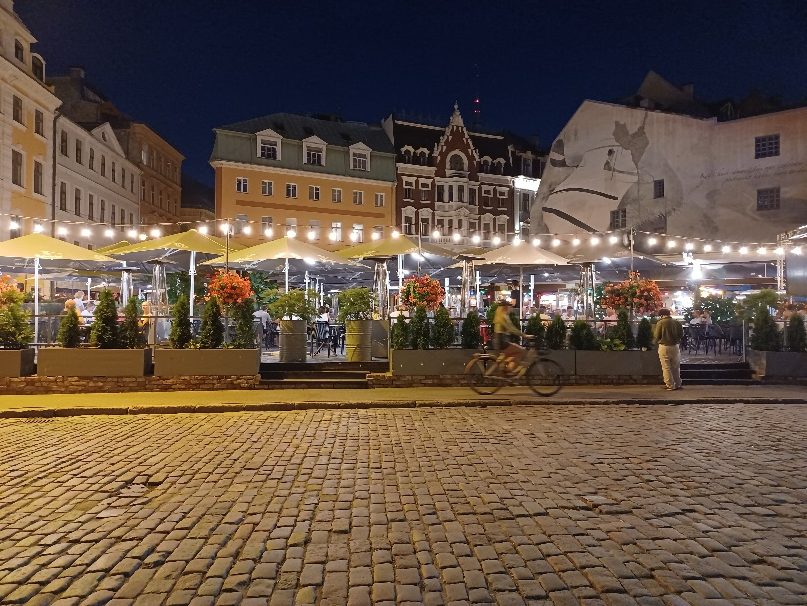
We pass through the Kronvalda park and cross a bridge over the canal, along which I took that boat trip earlier. Its underside is bathed in a blue light. Close by is a tiny bridge, the rails of which are so smothered with love locks that one can hardly see beneath them. In the distance behind the bridge rises the Freedom Monument bathed in floodlights. We wander past it before arriving in front of the large Russian Orthodox Church, the Nativity of Christ Cathedral, with its domes and columns also floodlit. Used by the Soviets variously as a restaurant and a planetarium it now serves its proper function.
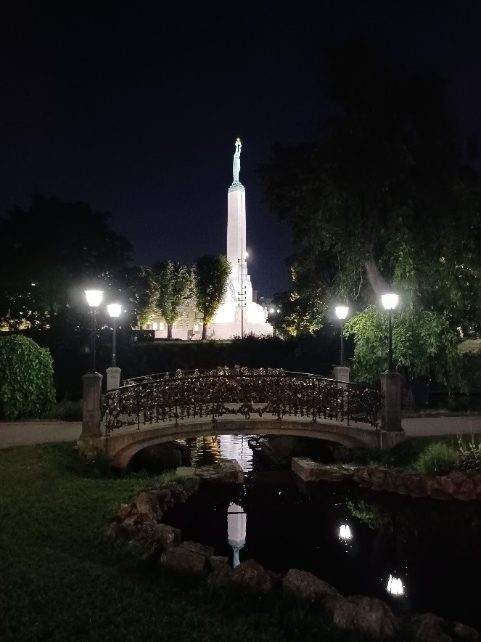
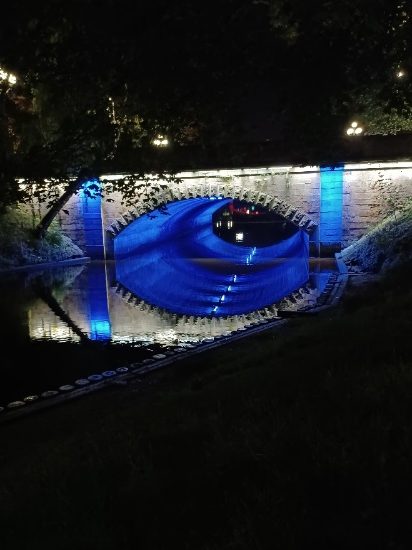
Jūrmala, Baltic Coast
I had been looking forward to seeing the Baltic coast. We head off next day to Jūrmala, a small city in the Gulf of Riga noted for its long sandy beach, a mere 26.8 km long, according to the Riga tourist map. Our guide tells us that this was the third beach of choice by wealthy Russians when Latvia was part of the USSR, Odessa and Sochi beating it to the top spot. Even Brezhnev sojourned here. “Jūrmala was more European in character than the other two”, our guide explains, and Russians, who were not permitted to leave Russia at the time, were attracted to it. They built large wooden villas along the beach front between the river and the sea. Buying one of these huge villas now would set you back several million euros apparently, although sanctions against Russian oligarchs have resulted in a dip in prices. At one time, the villas were divided up into smaller units for the workers, our guide tells us. One of the smaller houses we visit once belonged to a female novelist named Aspazhia, who was a campaigner for women’s rights under the Soviets in the early 1900s. Brave lady. Her pale blue and white painted wooden house with its small onion dome is now a museum dedicated to her life.
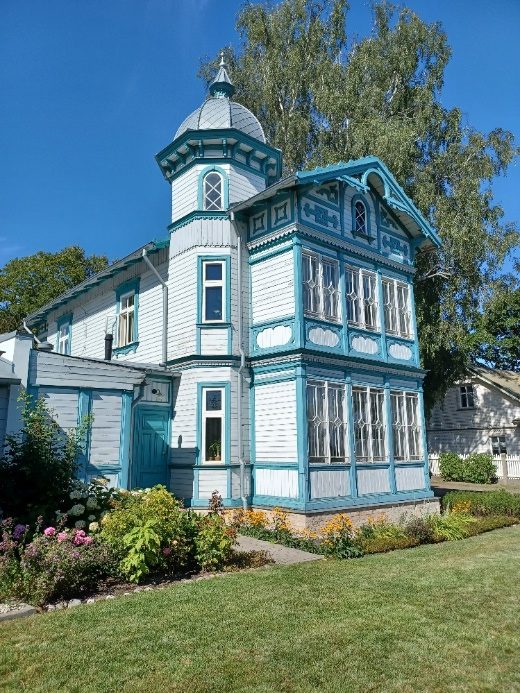
After the tour we are given an hour’s freedom. We paddle on that beach by the Baltic Sea. Blue sky, gently lapping ripples round our ankles. Soft sand. Temperature 26 degrees. Not bad at all. Even buy an ice-cream.
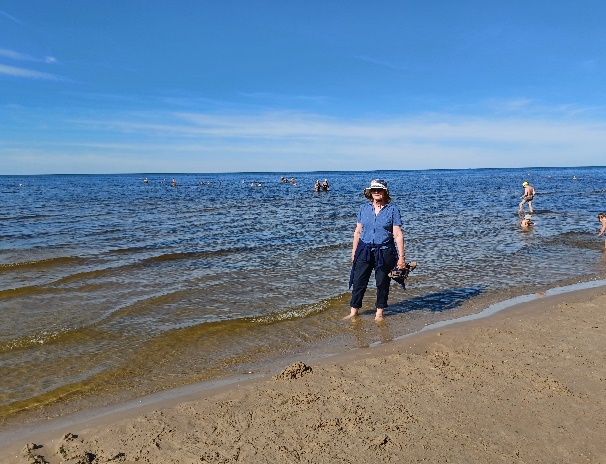
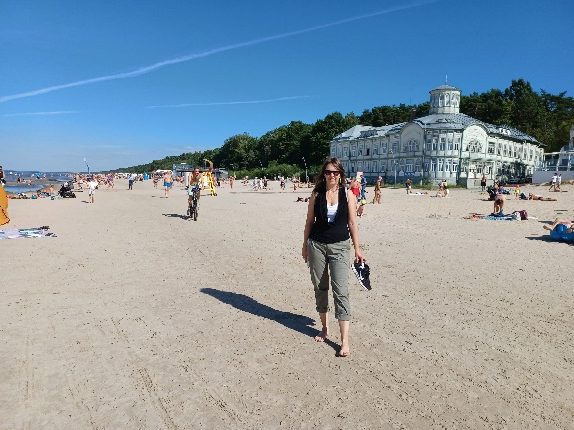

Leave a Reply